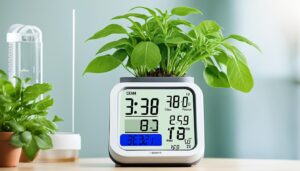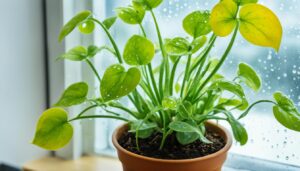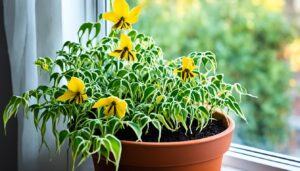Introduction
Delving into the realm of indoor gardening often unveils a captivating world of diverse and exotic plant species. Among these, the rattlesnake plant (Calathea lancifolia), with its striking foliage and unique characteristics, stands out as a favorite among enthusiasts seeking to add a touch of tropical allure to their living spaces. Native to the rainforests of Brazil, this stunning plant, also known as the Calathea lancifolia or Calathea insignis, has gained popularity for its vibrant leaves adorned with intricate patterns reminiscent of a rattlesnake’s skin, hence its moniker.
Caring for rattlesnake plants requires a delicate balance of attention to detail and understanding of their specific needs. While they may seem intimidating to novice gardeners, armed with the right knowledge and approach, nurturing these beauties can be a rewarding experience, resulting in lush, thriving foliage that enhances any indoor environment. In this comprehensive guide, we’ll explore the essential aspects of rattlesnake plant care, from optimal growing conditions to troubleshooting common issues, empowering you to cultivate these mesmerizing botanical wonders with confidence and success.
Creating the Ideal Environment
Creating an optimal environment is fundamental to the health and vibrancy of rattlesnake plants. These tropical beauties thrive in conditions that mimic their native rainforest habitat, characterized by warmth, humidity, and filtered light. Here’s a detailed breakdown of the key elements to consider when setting up the perfect environment for your rattlesnake plant:
- Lighting: Rattlesnake plants prefer bright, indirect light. Direct sunlight can scorch their delicate leaves, leading to unsightly damage. Place your plant near a window where it can receive ample indirect sunlight throughout the day. If your space lacks natural light, you can supplement with artificial grow lights, ensuring they are positioned at an appropriate distance to prevent overheating.
- Temperature: Maintaining consistent temperatures between 65°F to 80°F (18°C to 27°C) is ideal for rattlesnake plants. Avoid exposing them to sudden temperature fluctuations or drafts, which can stress the plant and compromise its health. If your home tends to get chilly during winter months, consider using a humidifier to regulate both temperature and humidity levels.
- Humidity: Adequate humidity is crucial for rattlesnake plants to thrive. Aim for humidity levels between 50% to 70%, which can be achieved through various methods. Placing a humidity tray filled with water and pebbles beneath the plant’s pot helps create a microclimate of moisture around the plant. Alternatively, regularly misting the foliage with water can provide the necessary moisture, especially in drier environments.
- Soil: Rattlesnake plants prefer well-draining, peat-based potting mixtures that retain moisture without becoming waterlogged. A mixture of peat moss, perlite, and pine bark provides the ideal balance of aeration and moisture retention. Ensure the pot has drainage holes to prevent water from accumulating at the roots, which can lead to rot.
- Watering: Proper watering is essential for the health of rattlesnake plants. Allow the top inch of soil to dry out between waterings, then thoroughly saturate the soil until water drains from the bottom of the pot. Avoid overwatering, as this can lead to root rot. During the growing season (spring and summer), increase watering frequency, but reduce it during the dormant period in fall and winter.
Feeding and Nutrition
Nourishing your rattlesnake plant with the right nutrients is essential for promoting healthy growth and vibrant foliage. While these plants are relatively low-maintenance compared to some other houseplants, they still benefit from periodic feeding during the growing season. Here’s a detailed guide to feeding and providing essential nutrients to your rattlesnake plant:
- Fertilizer Types: Rattlesnake plants respond well to balanced, water-soluble fertilizers formulated specifically for indoor plants. Look for a fertilizer with an N-P-K (nitrogen-phosphorus-potassium) ratio of 10-10-10 or 20-20-20, diluted to half strength. Alternatively, you can opt for organic fertilizers such as compost tea or fish emulsion, which provide a gentle, slow-release source of nutrients.
- Feeding Frequency: During the active growing season in spring and summer, feed your rattlesnake plant every four to six weeks. Dilute the fertilizer according to the manufacturer’s instructions and apply it to moist soil to prevent root burn. Reduce feeding frequency or cease altogether during the plant’s dormant period in fall and winter when growth slows.
- Application Method: Apply the fertilizer evenly around the base of the plant, avoiding direct contact with the foliage to prevent burning. Water the plant thoroughly after fertilizing to ensure the nutrients penetrate the soil and reach the roots. Alternatively, you can incorporate slow-release fertilizer pellets into the soil during repotting for a steady supply of nutrients over time.
- Micronutrient Considerations: In addition to the primary macronutrients (nitrogen, phosphorus, potassium), rattlesnake plants benefit from supplemental micronutrients such as iron and magnesium. Signs of micronutrient deficiencies include yellowing leaves with green veins or overall leaf discoloration. If deficiencies are suspected, consider using a balanced houseplant fertilizer with added micronutrients or apply a foliar spray containing chelated iron or magnesium sulfate.
- Monitoring and Adjustments: Regularly monitor your rattlesnake plant for signs of nutrient deficiencies or excesses, such as yellowing or browning leaves, stunted growth, or leaf curling. Adjust your fertilization regimen accordingly based on the plant’s response and environmental conditions. Remember that less is often more when it comes to fertilizing, so err on the side of caution to avoid overfeeding, which can lead to nutrient imbalances or toxicity.
By providing appropriate fertilization and essential nutrients, you’ll support the long-term health and vitality of your rattlesnake plant, ensuring it remains a stunning centerpiece in your indoor garden.
Pest and Disease Management
Despite their resilience, rattlesnake plants are susceptible to certain pests and diseases that can compromise their health and appearance if left unchecked. Implementing proactive measures for pest and disease management is crucial to maintaining the vigor and beauty of your plants. Here’s a comprehensive overview of common pests and diseases affecting rattlesnake plants, along with effective prevention and treatment strategies:
- Common Pests:
Pest | Description | Prevention and Treatment |
Spider Mites | Tiny arachnids that feed on plant sap, causing stippled leaves and webbing. | Increase humidity to deter mites. Use insecticidal soap or neem oil spray. |
Mealybugs | Soft-bodied insects covered in a white, powdery substance, typically found in leaf axils and along stems. | Remove with a cotton swab dipped in rubbing alcohol. Apply insecticidal soap or neem oil for severe infestations. |
Scale Insects | Hard, shell-like insects that attach to stems and leaves, sucking plant juices and causing yellowing or wilting. | Remove scales manually with a soft brush or cotton swab. Apply insecticidal soap or horticultural oil. |
Fungus Gnats | Small, black flies that lay eggs in moist soil, with larvae feeding on plant roots, leading to stunted growth and yellowing leaves. | Allow soil to dry out between waterings. Use yellow sticky traps to capture adult gnats. Apply Bacillus thuringiensis (BT) soil drench to kill larvae. |
- Common Diseases:
Disease | Symptoms | Prevention and Treatment |
Leaf Spot | Circular brown or black spots on leaves, often with yellow halos. | Improve air circulation and avoid overhead watering. Remove and destroy infected leaves. Apply fungicidal spray containing copper or sulfur. |
Root Rot | Soft, mushy roots, yellowing leaves, wilting, and eventual plant collapse. | Ensure well-draining soil and pots with drainage holes. Avoid overwatering and waterlogged conditions. Trim affected roots and repot in fresh soil. |
Powdery Mildew | White powdery patches on leaves, usually in humid conditions, leading to leaf distortion and premature leaf drop. | Increase air circulation and reduce humidity. Remove and destroy affected leaves. Apply fungicidal spray containing potassium bicarbonate or sulfur. |
- Preventive Measures:
- Maintain good hygiene by regularly removing debris and fallen leaves from around the plant.
- Quarantine new plants to prevent introducing pests or diseases into your indoor garden.
- Inspect plants regularly for signs of pests or diseases, especially on the undersides of leaves and in leaf axils.
- Avoid overcrowding plants and ensure adequate spacing to promote airflow and reduce humidity levels.
- Integrated Pest Management (IPM):
- Implement an integrated approach combining cultural, mechanical, and biological control methods.
- Encourage natural predators such as ladybugs or predatory mites to help control pest populations.
- Rotate insecticidal treatments to prevent pest resistance and minimize environmental impact.
Propagation Techniques
Expanding your collection of rattlesnake plants or sharing the beauty of these striking foliage specimens with friends and family is an exciting endeavor that can be achieved through propagation. Rattlesnake plants can be propagated through several methods, each offering its own advantages and considerations. Below, we’ll explore some effective propagation techniques along with step-by-step instructions:
- Division:
Description: Division involves separating a mature rattlesnake plant into smaller sections, each with its own root system, to create new individual plants.
Procedure:
- Carefully remove the parent plant from its pot and gently shake off excess soil to expose the root system.
- Identify natural divisions or sections where the plant naturally separates into distinct clumps.
- Using a sharp, sterilized knife or pruning shears, carefully divide the plant into smaller sections, ensuring each division has healthy roots and several stems or leaves.
- Plant each divided section in a separate pot filled with well-draining potting mix, and water thoroughly to settle the soil around the roots.
- Place the newly potted divisions in a warm, humid environment with bright, indirect light, and maintain consistent moisture levels until they establish roots and begin actively growing.
Advantages: Division is a straightforward propagation method that allows you to quickly multiply your plant collection using existing mature specimens.
Considerations: Ensure each division has sufficient roots and foliage to support its growth independently, and avoid over-handling delicate root systems to prevent damage.
- Stem Cuttings:
Description: Stem cuttings involve taking a section of stem with nodes and leaves from a healthy parent plant and encouraging it to root to form a new plant.
Procedure:
- Select a healthy, non-flowering stem with several nodes and leaves, preferably from the outer edge of the plant.
- Using clean, sharp scissors or pruning shears, cut the stem just below a node, ensuring the cutting is 4-6 inches in length.
- Remove any lower leaves to expose the nodes where roots will form.
- Dip the cut end of the stem in rooting hormone powder to encourage root development (optional).
- Plant the cutting in a small pot filled with moistened potting mix, ensuring at least one node is buried beneath the soil.
- Place the pot in a warm, humid environment with bright, indirect light, and keep the soil consistently moist but not waterlogged.
Advantages: Stem cuttings allow you to propagate multiple plants from a single parent specimen, and they often root relatively quickly under favorable conditions.
Considerations: Ensure the cutting receives adequate humidity and warmth to promote root development, and avoid direct sunlight to prevent leaf burn.
- Air Layering:
Description: Air layering involves encouraging roots to form on a section of a parent plant while it is still attached, allowing for easy separation and transplantation once roots have developed.
Procedure:
- Select a healthy, mature stem on the parent plant and make a shallow incision or remove a small section of bark approximately 4-6 inches from the tip.
- Apply rooting hormone to the exposed area (optional) and wrap it with moist sphagnum moss or a rooting medium.
- Enclose the moss-wrapped section with plastic wrap or a clear plastic bag to maintain moisture and create a humid environment.
- Secure the plastic wrap with tape or twist ties to hold it in place.
- Check the moss periodically to ensure it remains moist, and roots should begin to form within a few weeks.
- Once roots are well-established, carefully cut below the rooted section and pot it in a separate container filled with potting mix.
Advantages: Air layering allows you to propagate plants without disturbing the parent plant, and it often results in robust root systems for the new plants.
Considerations: Ensure the rooting medium remains consistently moist throughout the air layering process to promote root development, and be patient as roots can take several weeks to form.
Pruning and Maintenance
Pruning and maintenance play crucial roles in keeping rattlesnake plants healthy, vibrant, and visually appealing. Regular upkeep helps remove dead or damaged foliage, encourages new growth, and maintains the plant’s overall shape and appearance. Here’s a detailed guide on pruning and maintenance techniques tailored specifically for rattlesnake plants:
- Removing Dead or Yellowing Leaves:
Description: Dead or yellowing leaves not only detract from the plant’s aesthetic appeal but can also serve as breeding grounds for pests and diseases. Removing them promptly helps promote overall plant health.
Procedure:
- Gently grasp the base of the affected leaf and trace it down to the stem.
- Using clean, sharp scissors or pruning shears, make a clean cut at the base of the leaf where it meets the stem.
- Dispose of the removed foliage in the compost or trash to prevent the spread of pests or diseases.
Frequency: Check your rattlesnake plant regularly for dead or yellowing leaves, especially those towards the bottom of the plant, and remove them as needed.
Benefits: Removing dead or yellowing leaves improves the plant’s appearance, reduces the risk of pest infestations and diseases, and redirects energy towards healthy growth.
- Pruning Leggy or Overgrown Growth:
Description: Over time, rattlesnake plants may develop leggy or overgrown stems, detracting from their compact and bushy appearance. Pruning helps maintain the plant’s shape and encourages new growth from lower nodes.
Procedure:
- Identify the sections of the plant that appear leggy or overgrown, typically characterized by sparse foliage or elongated stems.
- Using clean, sharp scissors or pruning shears, trim these sections back to just above a healthy leaf node or joint.
- Avoid removing more than one-third of the plant’s foliage at a time to prevent excessive stress.
Frequency: Prune your rattlesnake plant as needed throughout the growing season to maintain its desired size and shape.
Benefits: Pruning encourages bushier growth, promotes new foliage development, and revitalizes the plant’s appearance.
- Cleaning and Dusting:
Description: Dust accumulation on the foliage of rattlesnake plants can obstruct pores, reduce photosynthesis, and attract pests. Regular cleaning helps keep the leaves clean and free from debris.
Procedure:
- Use a soft, damp cloth or sponge to gently wipe down the tops and undersides of the plant’s leaves, removing dust and debris.
- Alternatively, place the plant in a shower or under a gentle stream of lukewarm water to rinse off dust and grime.
- Allow the leaves to air dry before returning the plant to its usual location.
Frequency: Clean your rattlesnake plant every few weeks or as needed to keep the foliage looking fresh and vibrant.
Benefits: Cleaning and dusting remove debris, improve air circulation around the leaves, and enhance the plant’s overall appearance.
- Inspecting for Pests and Diseases:
Description: Regular inspection is essential for detecting and addressing pest infestations or disease symptoms early, before they can cause significant damage to the plant.
Procedure:
- Thoroughly examine the foliage, stems, and soil surface for signs of pests such as spider mites, mealybugs, or scale insects.
- Look for symptoms of common diseases such as leaf spot, powdery mildew, or root rot, including discolored or distorted foliage, wilting, or unusual growth patterns.
- If pests or diseases are detected, promptly implement appropriate treatment measures to prevent further spread.
Frequency: Conduct routine inspections of your rattlesnake plant at least once a week, paying close attention to new growth and areas prone to pest infestations.
Benefits: Early detection and intervention can help prevent pest and disease outbreaks, minimizing damage and preserving the plant’s health and vitality.
Conclusion: Nurturing Vibrant Rattlesnake Plants
In the journey of cultivating rattlesnake plants, we’ve delved into the intricacies of providing optimal care, from creating the ideal environment to propagation, pest management, and maintenance. These tropical wonders, with their mesmerizing foliage and unique charm, have captured the hearts of indoor gardeners worldwide, offering a glimpse of the lush beauty of their native rainforest habitats.
As we conclude this comprehensive guide, it’s essential to emphasize the rewarding nature of nurturing rattlesnake plants. Beyond their aesthetic appeal, these plants embody resilience, adaptability, and the timeless allure of nature’s creations. They serve as reminders of the interconnectedness between humans and the natural world, fostering a sense of wonder and appreciation for the biodiversity that surrounds us.
By applying the insights gained from this guide and embracing the journey of plant parenthood with patience and care, you’ll not only witness the growth and transformation of your rattlesnake plants but also embark on a journey of personal growth and discovery. Whether you’re a seasoned gardener or a novice enthusiast, the joy of tending to these botanical treasures transcends skill levels, inviting you to immerse yourself in the rhythms of nature and savor the simple pleasures of nurturing life.
So, as you continue your journey with rattlesnake plants, may each new leaf unfurling and each vibrant hue adorning their foliage serve as a testament to the beauty of nature’s creations and the enduring bond between humans and plants. Happy gardening!
Thank You for visiting us here, You can learn more about us at The Landscape Connection.




